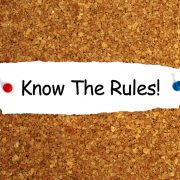Self-Directed IRAs – One of the Many Legs of the Three-Legged Retirement Stool
When Congress designed the current system of retirement savings in the 1970s, planners frequently referred to retirement income security as a three legged stool. The three legs, of course, were individual savings, workplace/government pensions, and Social Security. The Self-Directed IRA itself would fall under the category of individual savings, as the same or similar investments would if they were held in a taxable account.
The world has changed a lot since then. First, the private defined benefit pension plan has largely gone the way of the Dodo bird – replaced by defined contribution plans like 401(k)s and 403(b)s. These are quite valuable, but they require the investor to bear the significant risks of underperformance and undercontribution – two risks which we now know the individual worker, on average, is woefully unprepared to bear alone. Most people who own Self-Directed IRAs are doing fine, fortunately, but Self-Directed IRA owners are still only a small fraction of Americans.
So except for a fortunate few covered by solid corporate pensions and government employees, the three-legged stool as envisioned in the 1970s isn’t really a reality anymore. This is especially true with the long-term solvency of the Social Security system in doubt unless Congress stages a massive intervention – which of course will have to be paid for somehow, too.
So what are the new legs?
- If you’ve got an old-fashioned, guaranteed, defined benefit pension in this day and age, count your lucky stars. Pensions are valuable because they provide workers with a guarantee that they won’t run out of income as long as they live – a benefit that would cost quite a bit if you bought the same guarantee from an insurance company with an annuity. Even if the pension fund itself, goes bust, benefits are generally covered by the Pension Benefit Guaranty Corporation. The problem is that except for government workers, these old, traditional oases of retirement security are few and far between, as they are very expensive for companies to fund.
- These are financial products specifically designed to generate a defined income, either no or commencing at some point in the future, with a level of guarantee by the insurance company. Annuities provide workers with a way to create their own guaranteed income, similar to a pension. But you still have to save a substantial amount of money to get this to happen. However, annuities – especially single premium income annuities (SPIAs), which convert a lump sum into a guaranteed lifetime income.
- Employer matching contributions. Your employer could be matching your contribution to a 401(k) or 403(b). Regardless of what kind of plan you have, it’s usually smart to contribute at least the minimum required to take advantage of your company’s match. Even if you’re trying to get out of debt, still, it’s still usually wise to pick up a company match of 50 cents to 100 cents on the dollar for the first few percentage points of your income. It’s essentially free money, with creditor protection, and it grows tax-deferred.
- Conventional IRA assets. By these we mean investment and savings products, like mutual funds, publicly traded stocks and bonds, CDs and money markets. These can be held in traditional or Roth IRAs. They are usually easy to buy and sell and are, with some extent.
- Self-Directed IRA and other retirement accounts. These can be in Roth or traditional accounts, and are made up of a more diverse array of assets not typically found in most retirement portfolios:
- Rental property
- Private equity
- Private lending
- Hedge funds
- Closely held businesses
- House flipping
- Gold and precious metals
- Foreign assets
- Illiquid stocks and bonds
- Non-publicly traded REITs and Business Development Companies
- Tax liens and certificates
- Land banking
- Farms and ranches
- Horse breeding/training
- LLCs, Partnerships and joint ventures
Taxable investments. These are investments held outside of a tax-advantaged retirement account. You’ll have to pay taxes on capital gains, but long-term capital gains rates are generally lower than ordinary income taxes. Holding a mix of investments in traditional IRAs and 401(k)s and other tax deferred vehicles, Roth and other tax-free vehicles like municipal bond interest and loans against life insurance policies, and taxable investments subject to capital gains rather than income tax, provides for more tax planning and mitigation opportunities than holding in any one category alone. Pay attention to asset placement as well. Some assets do better under some tax regimes than others.
Home equity. A paid-for home works both ways: You don’t have to pay your mortgage anymore, and you can begin taking money out in the form of income using a reverse mortgage, beginning at age 62. There are some important disadvantages to reverse mortgages, so ensure you read carefully before committing to one.
Disability Income Insurance. Do you have a written contract from God promising you will not become sick or hurt and unable to continue working and earning the income that allows you to save for retirement in the first place? Neither do we. Disability income insurance protects your ability to save and invest. It’s vitally important for many reasonably affluent people who rely on income from their jobs as their chief resources for their retirement security.
Social Security. Yes, it’s still there, and it’s still a vital resource – especially for lower-income workers and retirees, since the net impact of Social Security is redistributive. Younger workers may be disappointed to learn that the program may not be able to pay the benefit levels currently expected.
Part-time Income. We hope you’re working because you want to work, not because you have to work. But part-time income can be an important and rewarding part of your retirement income picture. We recommend investing now in developing a skill set that people will pay you for in your later years, when your health is in decline. You don’t want to be in your 80s doing construction. But there are a lot of other things you can do that you can expect to be doing well into your senior years. The sky’s the limit!
Grandchildren. Yes, children are expensive. But a happy family is an immense source of wealth, too – not just emotionally and spiritually – which is important – but also as a future form of support in your declining years.
Want to learn more? Call us at 866-7500-IRA(472) – or download our exclusive guides to Self-Directed IRA investments, available free on our website, www.americanira.com. We look forward to working with you!
Image by: presentermedia.com






